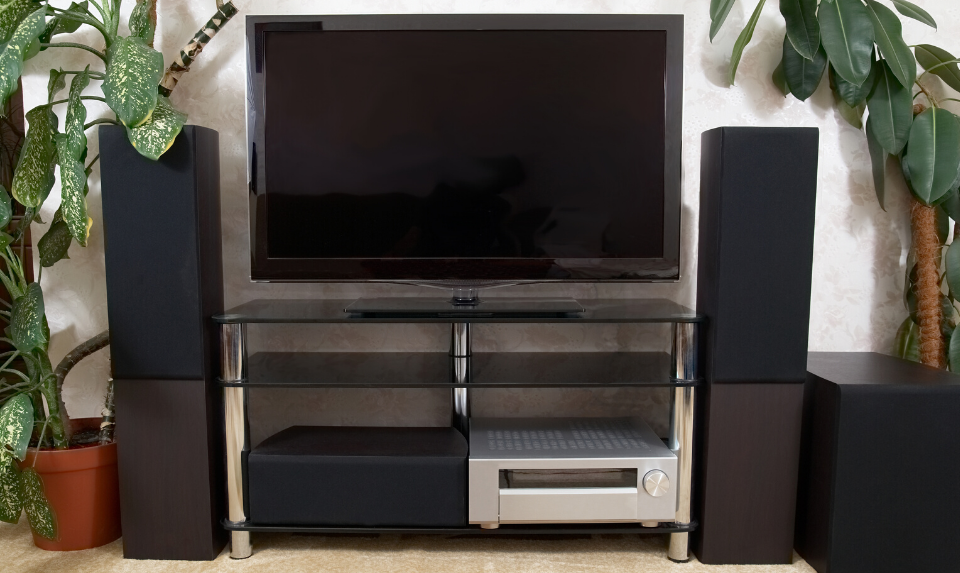10 Tips in Setting Up a Home Theater
It doesn’t take a great deal effort to turn a usual room into a home theater—just add a TV. But keeping in mind how many movies and TV shows a lot of us really watch at home, why not go the extra mile and create a space that improve the movie theatre experience? Here are some easy (for the most part) steps for making a home theater that’s worthy of all the time you’ll use for it.
1. Find Your Visual Sweet Spot
Engineers and scientists have worked long and hard to come up with the best viewing distance for watching HDTVs. The math is quite simple: take the display’s diagonal screens dimension and multiply it by 1.5 to 2.5. That’s how far your chairs, couch, or other favourite seating choices have to be placed relative to the front of the television.

2. For Small Rooms, Try a Soundbar
Most up to date HDTVs can pump out refined sound, but nothing sends that cinematic experience quite like dedicated speakers. For small rooms, think about having a soundbar, which packs numerous speakers into a single low-profile, horizontal package. Some of the sleeker models can fit right underneath the screen, whereas others act as a sort of reinforced support, with the TV sitting right on top.
3. Clear Space for Wall-Shaking Bass
One more simple audio improvement comes from a subwoofer, a bass-only type of speaker that’s intended to literally pulsate in the room. Don’t scale these boxy behemoths in a cabinet (where their vibrations will produce more of a disturbing rattle than a pleasing rumble), but on the floor. The key here is to ensure there’s ample space right against one of your home theater’s walls, and if possible, in a corner.
4. Stow Speakers in Bookshelves
One of the hallmarks of next-level home theater audio is separation—setting up speakers so that sound effects, dialogue, and other audio seem to come from various directions, such as center left, and right. Though you could pull this off with a pair of massive floor-standing speakers, the subtler approach (for non-cavernous locations) is to place smaller speakers on shelves, positioned to the left and right of the TV. This stealthier setup also aids to hide unsightly cables.
5. Mount Up for Surround Sound
The best, but most intricate, audio setup is full surround sound, which usually entail six total speakers, or audio channels—one for the middle, two at the rear, the right and the left, and one subwoofer. The biggest challenge, however, is usually rear-channel placement. Though you might stumble across the ideal pair of shelves or other fixtures to set those speakers on, expect to go the distance and mount the back channels in the wall (the upper rear corners of most rooms work fine).

6. Sit up Straight for 3D
If you plan on watching plenty of 3D content, get yourself a chair with a stiff back. Why? Because slanting your head to one side or the other can distort the 3D effect—meaning the sort of sprawling position typical to couch-based viewing is ineffective. So ensure your chair or couch faces forward, in a way that discourages slouching and lounging.
7. Check Your Angles
A number of HDTVs can be viewed from relatively excessive angles (to the left, right, or even from above and below), while others need more of a dead-center position. prior to you drilling any holes or buy any new fixtures, stick the TV approximately where it’s going to go, turn it on, and ensure none of the home theater seats are getting entirely short-changed.
8. Turn Away From Glare
While examining for bad angles, think about how much light is hitting the screen from your windows at different times of the day. The same goes for unnatural light (track lighting, lamps, etc.). Even the brightest image can’t compete with extreme glare, so attempt to position the TV in as much round-the-clock shadow as possible.
9. Kill Two Birds with One Curve
Those last two issues— screen glare and bad angles—can be mostly dealt with by choosing a curved HDTV. The slight bend in these displays in fact increases the total viewing angle to any side of the TV, while also preventing glare. Prioritizing this attribute can take most of the fuss out of the overall home theater setup.
10. Put on Headphones, And Sit Wherever You Want
Until very recently, headphones and TVs were an uncomfortable fit, needing that you either sit awkwardly close to the screen (given that most earphone cords are not more than a few feet long), or discover where to put the massive, interference-prone RF transmitters that work with wireless headphones.
But a lot newer models let you plug standard headphones directly into the remote control, granting you access to completely synced, absolutely private audio, from basically any seat in the area. Only a handful of merchandise currently offer this trait, the most recent of which is the PS4, which has an audio jack built into the game controller.